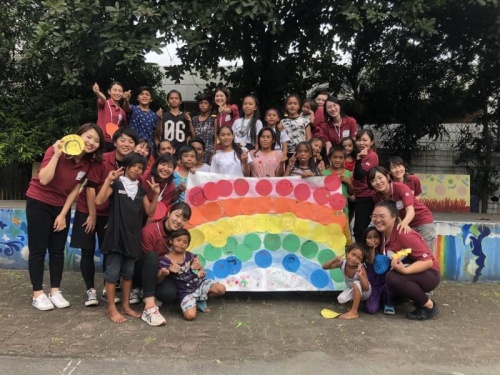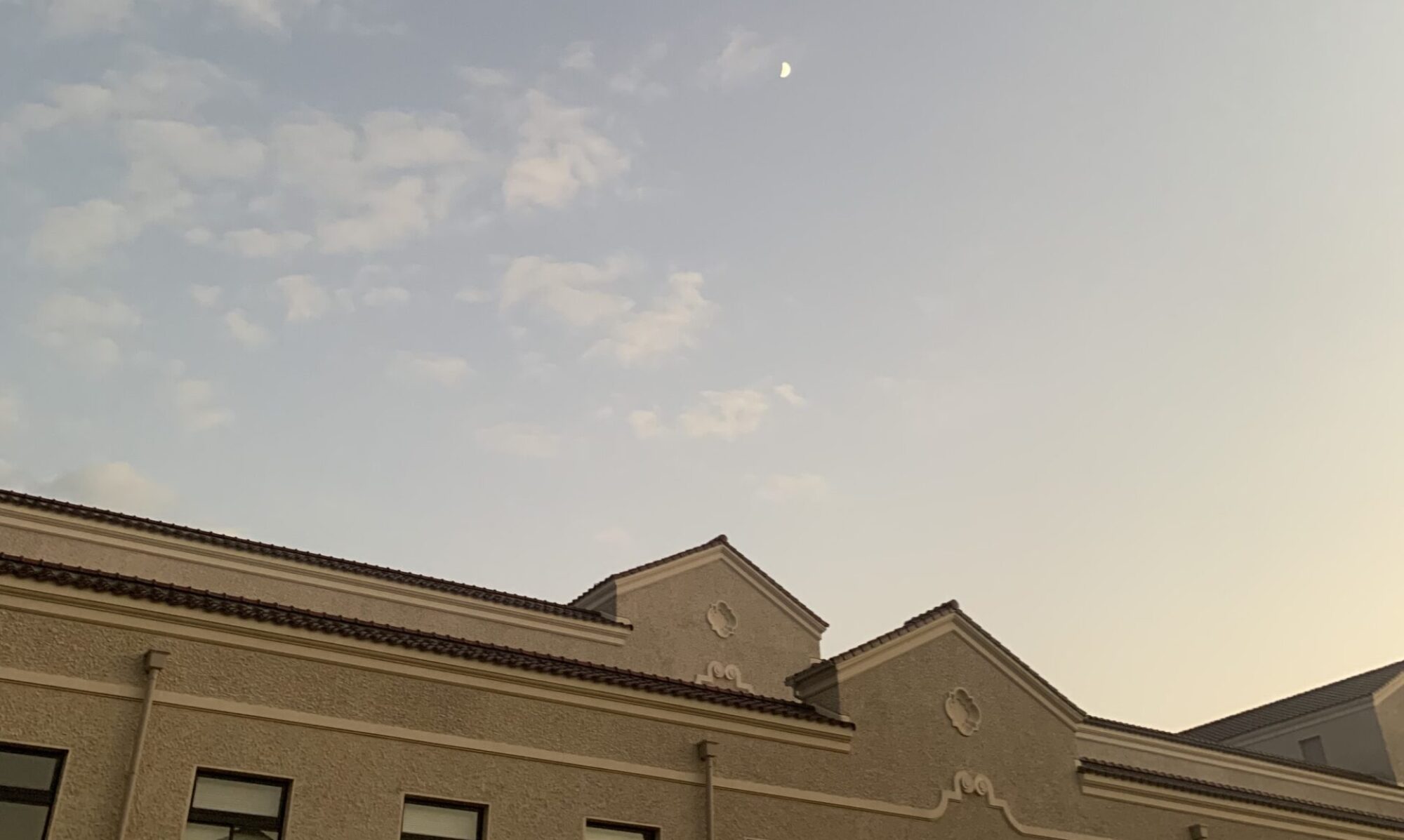
Hello, everyone.
Today, I’ll report the fieldwork in Philippines in 2018.
【Main schedule】
Day1
Arriving at Philippine
Preparation for the activities
Day2
Visiting Asian Development Bank
・ Briefing on ADB (Mr. Watanabe, Altenate Executive Director for Japan)
・Discussion with Japanese Staff of ADB
・Tour of ADB facilities
・Lunch with Japanese Staff of ADB
Activity at Childhope
Day3
Research at Childhope
Activitis at Sandiwaan
Visiting Smokey mountain
Day4
Going back to Japan
Asian Development Bank (ADB)
We visited ADB in Philippines. ADB is the international development organization which aims at promoting economic growth and cooperation in Asia and Pacific Ocean and contribute to developing communities’ economic growth. We could ask some questions to 3 Japanese staffs who works for education in South Asia, city development in East Asia, and accounting.
【About an exchange of opinions with ADB staff】
We listened to the speech from the three ADB staff, and we will show you what we remained impressive in particular. We got some impressive opinions as an answer about the required ability and competency in working as an international civil servant, so we will introduce some of them.
・Ability to present specifically what the leader is expecting on projects as team members
・
Ability to communicate calmly and clearly as a leader in working with people who are completely different in nationality and background(The calm communication that the staff think is attitude to listen to the other’s story collect and telling not to misunderstand )
・Ability of schedule management(All staff said this is a strength for Japanese) At first glance, these competency seem easy. However, when it comes to do, there are many situations that we think difficult in our school life. For example ability of communicate clearly. In the discussion of our seminar, we have a problem that estimate own opinion easy to understand and understand one’s feeling clearly. We think that we should conscious of that when we act.
【Approach to sustainable environment】
There are three approach to environment in ADB. Firstly, ADB has solar panels on the roof. They can cover around 4% of all electricity, and other 96% are covered by heat by means of steam that some factories emitted. These efforts can decrease the amount of CO2 because they are sustainable way and using renewable energy. Secondly, it innovates a new technology that absorbs moisture in the air, filters them, and changes to drinkable water. It also focuses on recycling through selling shredded papers to merchants. We could learn about these kinds of efforts that ADB is doing for environmental issues.
Street children
【the state of Street children】
According to the International NGO, Philippine is carrying approximately 246,000 street children. Their circumstances can be classified in 3. Street children who are spending their all time in the street, ones who stay at the street to work in the day, and who are abandoned by their families. Most of the street children working earns money by cleaning the window of the stopped car on the road, or selling products. However, most of their tips could be taken by the adults as if its undeserved. The trafficking in street children are also a serious issue. Not only girls, but also boys are been caught and forced to work.
【Children at Childhope】
Child Hope is NGO that has definite data and high reliability. Child Hope do programs with educator and social worker. Educators teaches various lessons and social worker cares mental of poor children. Because street children has psychological stress, it is important for them to receive supports from educator and social workers. We interacted with about twenty poor children of the age of 5 to 16. Because there are disparities of wage and employment between English speakers and non-English speakers, some of them can speak English. Therefore Child Hope is teaching English for street children. Father more educators are teaching sexuality, sanitary education to protect children and also they are learning how to spend money. Some children after graduating Child Hope will get some jobs like drivers, cleaning staffs. One of them became an educator and working at Child Hope.
【About our Activities (Smile for children)】
Our goal was made children happy and giving an opportunity to make a good memory for them. In this activities, we taught how we can see the rainbow and the colors rainbow has in Japanese through we performing a play. After that, we made a big rainbow art together. Children were enjoyed drawing picture of their smiley faces. Secondly, we showed a dance about the weather and danced together. We had a blessed time with children through the dance despite the language barrier. At last, we gave presents of treats and handmade Japanese toy “Koma”. This is made of the cap of a plastic bottle. When we gave it to children, we told children to line up and have a Koma one of each. These rules tell children importance of following the rules and equality. The NGO staffs said children looks having so much fun and happy compare to usual day. Children were full of smile, probably because they are luck of love from family and people around one, and we talked friendly with children. They enjoyed whole activities and also we had a great time as well.
Visiting Sandiwaan
We visited a school in philippines. students are over 14 year-old and before they go to the school, they dropped out their schools because of economic reason such as money. Why students go to the school is that they need high-school equivalencies. This certification will be needed when students get good jobs which they can get high salaries, and also when they want scholarships. Student have classes of math, english, computer, and so on. All class is for job-hunting and entrance examination of university or college. Each students in the school have different backgrounds, for example, a 20 year-old girl have a child. In addition, their ages are not same, but we could feel that class have warm atmospheres and have good and fun conversations. Among them, what impressed us most was that the students were very curious and interested in us having come from Japan, and each of them had various dreams for the future, for example, a teacher, an engineer, and a police man, and so on. I thought this interaction between the people who were same generation and who had different native languages could bring motive toward daily learning to them with giving students confidence by making reconfirmation that they can use their knowledge studied in the school. Furthermore, I felt there were many things we have to learn from their eager attitude trying to find hope in their poor life.
Smokey mountain
We went to Smoky mountain (a mountain made by garbage) which was closed in 1995. Quite a lot of time passed since then. It seemed like the garbage turned into earth and a mountain with piled stones at first glance. However glasses, metal, and plastic bags were scattered at our feets. Then, we realize the misery of current situation of garbage disposal in Philippines. There are many people who live in apartments that Philippines government built and houses built with garbage such as tin or wood around the Smoky Mountain. In addition, according to international NGO, there are about 100 community in top of Smoky Mountain.It seems that people who live there make a living by raising crops, selling them, picking up garbage and going to sell it. They were different from the street children whom I visited on the day before in environment and the appearance that lived, a language to be able to talk about. Though it was children of the similar poor, the put situation was different, and we were shocked by a level varying in poverty. However, we watched many smiles and were able to hear a dream in such a life. Through interviews with children and interviews with Child Hope staff, We realized that there is a big difference between lives in Japan and their lives. Also, while the government’s support is lacking, various actors are providing assistance, but We think that it is far from solving problems. We not only supported NGO organizations and others but also felt that government assistance was even more necessary. In this activity we reviewed the question and investigation result that we held and investigated the feasibility of the policy to solve the poverty problem currently being addressed at the research fair to be held in November at the university, We want to announce it. Thank you for reading.
